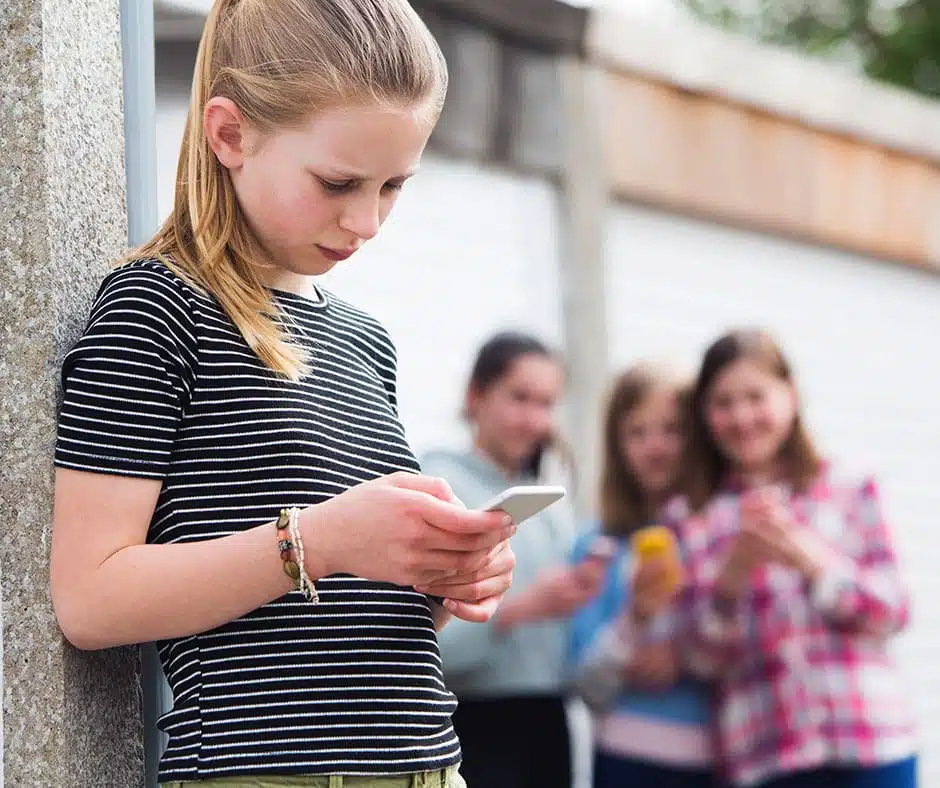Cyber bullying is not just seen in the movies. Cyber bullying is real and harms hundreds of teens almost every day. For as long as anyone can remember, bullies have been around in almost everyone’s everyday life. Whether they are at school or in other parts of our social and personal life, they have been and are present. Cyber bullying can result in serious physical and emotional damage to young teens, which can lead to devastating outcomes. Parents need to be aware of what goes on in the lives of their children behind their phone and computer screens. Because of the progression in technology, social media applications such as Facebook, Instagram, Twitter, and Snapchat give bullies a new platform for violence conveniently behind their screens. Parents today need to be aware of the ways to prevent cyberbullying more than ever.
A Word from a Professional
An interview about young teens and social media was done with Cory Brosch, a Licensed Marriage and Family Therapist (LMFT) and Program Director at Clear Behavioral Health in Redondo Beach, CA. He specializes in addiction treatment including substance abuse as well as gaming and technology. Brosch mentioned:
“I suggest to parents that they should be on their kids’ social media. Have your own social media accounts so you can see what they post and who they are interacting with.”
He went on to comment:
“Once your kids are on social media, you have to be really involved. You both need to be very open and honest. With social media comes interactions with adults, bullies, pedophiles, and criminals. There are people in the cyberworld looking to manipulate people who are young and naïve. Parents need to sit down in conflict and talk with their children about social media and have boundaries and rules. Otherwise, you end up with a 17-year-old who does whatever he or she wants on their phone.”
He further said:
“One compromise you can make is having a family social media account for the entire family to post on there. It is a good introductory to social media.”
Overall, children’s internet usage has to be monitored. Brosch further discussed about children and social media:
“In my professional opinion, I think 18 years old is when a child is old enough to have a social media account. But I also realize a lot of parents won’t do that. So, I would go down to 16 with a lot of supervision. I think having a social media account before the age of 16 is opening the door to many mental health problems.”
What is Cyber Bullying?
Cyber bullying, also spelled cyberbullying is the act of harassing a person with electronic communication either through the internet or text messages. While behind a phone or computer screen, the victim can be targeted by someone he or she knows or anonymously. Acts of cyber bullying include sending intimating, hurtful, or threatening messages to someone. There are different ways cyberbullying can happen to a victim and ways to prevent it. Some acts can include but are not limited to some of the following:
- Sending hurtful texts, direct messages, and/or comments.
- Spreading harsh and cruel rumors through social media or text messages.
- Posting embarrassing photos or videos on social media without permission.
The areas in which cyber bullying occur the most include some of the following:
- Blogs and personal websites.
- Emails and texting.
- Instagram.
- Twitter.
- Facebook.
- Snapchat.
- YouTube.
- Any instant messaging applications.
- Video games.
- PS4
Who Is Cyber Bullying Affecting?
Cyber bullying can affect almost anyone that has access to a computer, phone, or tablet. Currently and typically, the main victims being targeted are young teenagers. In 2016, a survey study was conducted by the Cyber Bullying Research Center to 5,700 middle and high school students from the ages of 12 and 17 in the United States. The survey showed the following:
- Out of the 5,700 middle and high school students, 33.8% of the students were victims of cyber bullying at during a stage of their life.
Another national phone survey study was conducted by the PEW Internet & American Life Project to 935 teenagers. The study showed the following:
- Girls are more likely to be targets of cyber bullying than boys, with girls at 33% and boys at 25%.
Despite the statistics, cyber bullying has no type or preference. Anyone can be a victim of cyber bullying.
Ways to Prevent Cyberbullying
If cyber bullying occurs to your child, some helpful steps can include some of the following:
- Do not respond to the cyber bullying messages.
- Document evidence of cyber bullying.
- Make note the dates, times, and descriptions of instances when cyber bullying has occurred. Keep and print screenshots, emails, and text messages.
- Use this evidence to report cyber bullying.
- Block the cyber bully.
- Report cyber bullying to social media providers, schools, and law enforcement.
If your child or someone you know has ever been cyber bullied, a rush of emotions can go through your body all at once. If the cyber bullying is consistent, overwhelming feelings can also happen. As a parent, you are concerned for your child’s safety. There have been several recent stories of children developing metal health problems and taking their own lives because of cyber bullying. With a large number of teenagers being affected, it is important to communicate with one another and talk about any issues that arise from their social media and everyday life. Few victims of cyber bullying will inform their parents or a trusted adult about their cyber bullying, which is why it is extremely important to talk to your children and build a trusting relationship in order to help prevent cyberbullying.
